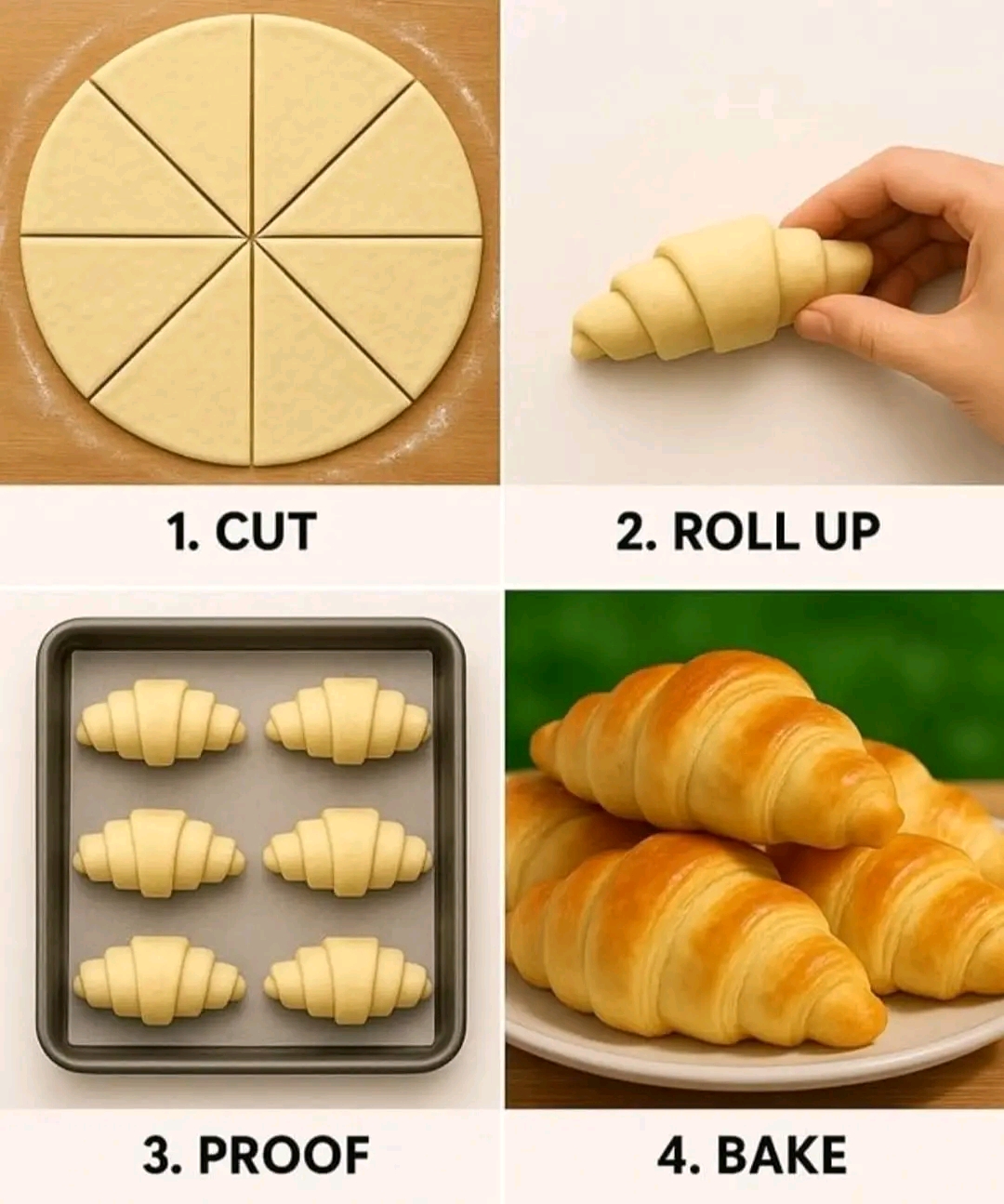Here’s a big, complete write-up for your Classic Buttery Croissant Recipe 🥐🥐, including introduction, history, ingredients, step-by-step methods, formation, conclusion, and a touch for croissant lovers.
🥐 Classic Buttery Croissant Recipe (Step-by-Step)
Introduction
The croissant is one of the most iconic pastries in the world, loved for its golden, flaky layers and irresistible buttery aroma. Nothing compares to biting into a warm, homemade croissant fresh from the oven — crispy on the outside, airy and tender inside. Although making croissants at home requires patience and time, the results are absolutely worth it. With this recipe, you’ll learn the art of laminating dough, a process that creates the croissant’s signature layers.
📜 A Brief History of Croissants
The croissant’s origins trace back to Vienna, Austria, where the kipferl (a crescent-shaped bread) was made as early as the 13th century. It wasn’t until the 17th century, after the Ottoman siege of Vienna, that the pastry evolved into something closer to what we know today. French bakers later refined it with laminated dough, creating the modern buttery croissant that became a staple of French breakfast culture. Today, croissants are enjoyed worldwide, symbolizing elegance and indulgence.
🛒 Ingredients
For the Dough
- 4 cups (500g) all-purpose flour
- 1/2 cup (120ml) warm water
- 1/2 cup (120ml) warm milk
- 1/4 cup (50g) granulated sugar
- 2 1/4 tsp (7g) active dry yeast (1 packet)
- 1 1/4 tsp salt
- 3 tbsp unsalted butter, room temperature
For Laminating
- 1 cup (225g) cold unsalted butter
For Egg Wash
- 1 egg, beaten with 1 tbsp milk
🥐 Step-by-Step Instructions
Step 1: Activate the Yeast
- In a small bowl, combine warm water, warm milk, sugar, and yeast.
- Let it sit for 5–10 minutes until foamy. This ensures your yeast is active.
Step 2: Make the Dough
- In a large mixing bowl, combine flour and salt.
- Add the yeast mixture and softened butter.
- Mix until a rough dough forms, then knead for 5–6 minutes until smooth and elastic.
- Shape into a ball, cover, and refrigerate for at least 1 hour.
Step 3: Prepare the Butter Block
- Place the cold butter between two sheets of parchment paper.
- Pound and roll it into a flat square, about 6×6 inches (15×15 cm).
- Chill until firm but pliable.
Step 4: Laminate the Dough
- Roll the chilled dough into a 10×10 inch (25×25 cm) square.
- Place the butter block in the center, like a diamond inside a square.
- Fold the corners of the dough over the butter to enclose it completely.
- Roll into a rectangle (about 20×10 inches).
- Fold into thirds like a letter (this is called a “turn”).
- Wrap and refrigerate for 30 minutes.
- Repeat the rolling and folding process 2 more times (3 turns total).
Step 5: Shape the Croissants
- Roll the dough into a large rectangle, about 1/4 inch thick.
- Cut into long triangles (base 3–4 inches wide).
- Starting at the wide end, roll each triangle tightly toward the tip, forming crescents.
- Place on a baking sheet lined with parchment paper.
Step 6: Proof the Croissants
- Cover loosely with plastic wrap.
- Let rise at room temperature for 1–2 hours, until puffy and doubled in size.
Step 7: Bake
- Preheat oven to 400°F (200°C).
- Brush croissants with egg wash.
- Bake for 15–20 minutes until golden brown and flaky.
- Cool slightly before serving warm.
🥐 Methods (Simplified)
- Laminating: Folding butter into dough to create flaky layers.
- Proofing: Allowing dough to rise before baking for airy texture.
- Egg wash: Adds shine and golden color.
🌍 Formation of the Croissant
The magic of a croissant lies in its laminated structure: thin alternating layers of dough and butter. When baked, the butter melts and creates steam, puffing up the dough and separating the layers. This is what gives croissants their signature flakiness.
❤️ For Croissant Lovers
Croissants are more than just a pastry — they’re an experience. Whether enjoyed plain, filled with chocolate, almond cream, or ham and cheese, they are perfect with morning coffee or as an indulgent snack. Lovers of croissants know the joy of peeling back each buttery layer, savoring the texture and taste bite by bite.
✅ Conclusion
Making croissants at home may seem daunting, but with patience and practice, anyone can master this classic French pastry. The reward? A tray of golden, buttery croissants that rival those from the best Parisian bakeries. Once you’ve made them yourself, you’ll appreciate every delicate layer even more.
Would you like me to also include a variation section (like pain au chocolat, almond croissants, or savory versions) so your recipe looks even bigger and richer?
